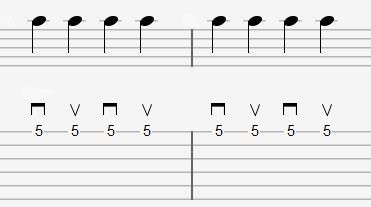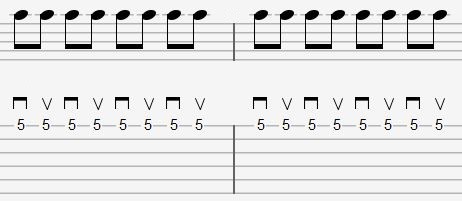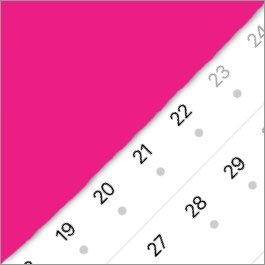Grade 7 Technical Focus: Tremolo Picking Tips & Exercises
Tremolo picking is a form of alternate picking, typically performed at a high speed focusing on one note over a set duration (eg playing the same note 4 times over one beat of music). Tremolo picking is an advanced technique that requires discipline and practice to master. When tremolo picking, try to keep the picking arm relaxed, if you tense your arm you will encounter fatigue issues when trying to push the speed of your picking.
As you begin developing your tremolo picking ability, you should focus on the precision of your notes and achieving an even note length across a set time range. One easy pitfall is to rush into attempting the speed before you have the technique committed to muscle memory. Rushing into the speed can present issues such as inconsistent note lengths and arm fatigue.
The following exercises will help you build up your picking fluency and stamina to allow you to tremolo pick consistently.
All exercises are designed to work with a metronome. As with all metronome-based practice, start slow and slowly increase the tempo as you become more proficient and comfortable with the technique.
EXERCISE 1
This exercise is a very slow exercise which is good for reinforcing the consistent up and down picking motion. By the time you attempt tremolo picking you should find that you are comfortable with alternate picking, however, if you feel alternate picking is something that needs addressing this is a great place to start.
This exercise is made up of all crochets (Quarter notes). That means each note will fall on one beat. When working this exercise with a metronome, set the metronome to a comfortable tempo which will allow you to alternate pick one note per beat. Downstrokes on the 1 and 3 beats and upstrokes on the 2 and 4. Once the technique starts to flow, slowly increase the metronome tempo.
EXERCISE 2
This exercise starts to break down the beat into sub-divisions. Instead of playing crotches on the beat, we now split that up into quavers (Eighth Notes), meaning we now hit two notes per beat. Splitting the beat in half gives us the “and” between the beats:
1 & 2 & 3 & 4 &
This new note between the beats changes the alternate picking pattern. The downstrokes now fall on each beat and the upstrokes will fall on the “&” of each beat.
When using a metronome for this exercise, you should aim to hit two clear and consistent notes per beat. Start at a slower, comfortable pace which allows you to split the beat out easily and then work your way up the tempo as you get comfortable. If you match a tempo with the previous exercise, this exercise will feel twice as fast because you will be playing twice as many notes across the same number of beats. If you are working on your consistency and accuracy you may find it easier to work on this exercise at a slower tempo than the previous exercise and then work up to a higher speed once the technique becomes cleaner.
EXERCISE 3
If we divide quavers into semi-quavers (Sixteenth notes), we get 4 notes per beat. This means, when we previously counted the “& as our extra note, we are now adding a note either side of that:
1 e & a 2 e & a 3 e & a 4 e & a
Your downstrokes will fall on the beat and “&” and your upstrokes will fall on the “e” and “a” of each beat.
This exercise will benefit from starting slow. When playing 4 notes per beat, the timings can become cluttered when the tempo increases. You will want the notes to retain their clarity and be even throughout. Be sure to take care when working on the 4 notes per beat to make sure your down and upstrokes are consistent throughout.
EXERCISE 4
This exercise is based on the same timing as Exercise 3, but this time each beat you will be moving to another note. Your 16 notes across a bar will be made up of 4 different pitches. This will test not only your ability to pick consistently across the bar, but also your ability to move your fretted finger in time with the beat.
EXERCISE 5
Typically, when you see tremolo picking noted on TAB, it will not appear as each note individually, it will appear as a single note with the tremolo picking symbol above it. This example shows how you would see tremolo picking in a real-world application. The important thing to note here is the note lengths. Following tremolo picking in this form will test your ability to read note lengths and count along with yourself rather than relying on how many times the note is written.
In the first bar, the first 2 notes are tremolo picked for 1 beat each and the third note is tremolo picked for 2 beats. In the second bar the first note is tremolo picked for 2 beats and the remaining notes for 1 beat each.
Be sure to practise the movement between notes and ensure that you are hitting the right note on the right beat. Take your time to familiarise yourself with the length you should stay on each note.
About the author
Matthew Rusk is a guitar teacher and professional musician based in South Yorkshire. He helps to run mgrmusic.com, one of the largest online communities of private music teachers in the UK, helping thousands of guitar students to find local guitar teachers. In his downtime he helps to create guitar lessons for publications like The Guitar Magazine, ensuring that students get the most out of learning to play the guitar.













